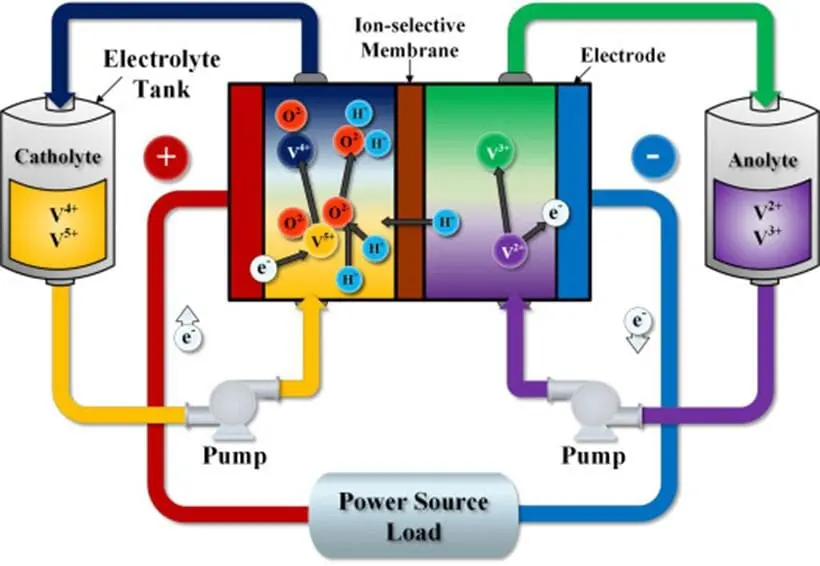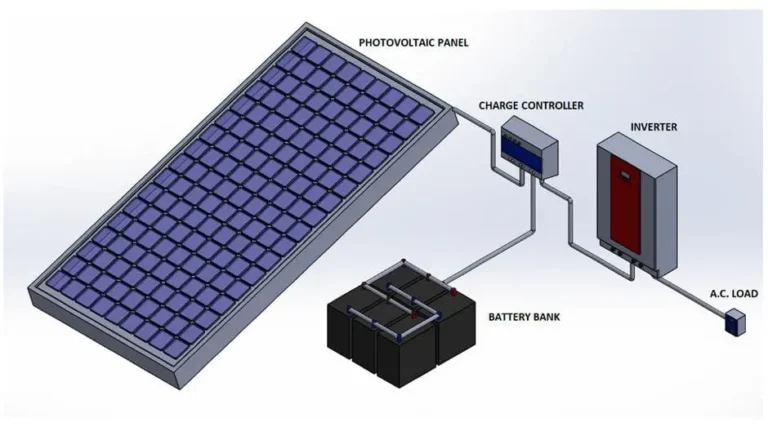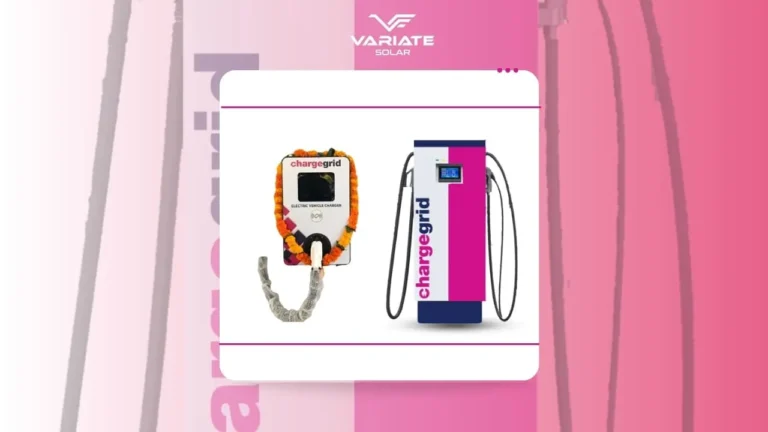Research Drives Vanadium Flow Battery Boundaries.
vanadium flow battery
The researchers outperformed traditional 30 kW solutions by creating a 70 kW vanadium flow battery stack. One of the biggest problems with renewable energy is energy storage. The goal of a grid powered entirely by renewable energy sources may never come true if massive amounts of energy cannot be consistently stored for long periods. A potential technology that provides scalable and extremely efficient energy storage is vanadium flow batteries (VFBs).
The system round trip efficiency of around 60% at maximum power could probably be improved by installing less power-consuming pump and control system power. Flow batteries always need two distinct chemical elements in two tanks that provide a reduction-oxidation reaction to produce an electrical current flow.
Applications
Vanadium flow batteries have a wide range of applications due to their special benefits.
Wind Energy Industry
At the moment, wind turbines need power to safeguard fan blades in an emergency. This power is roughly equal to 1% of a lead-acid battery. Furthermore, every wind turbine has the necessary power installed, which is roughly equal to 10% to 50% of the batteries used for dynamic storage. You’ll need more of the dynamic battery packs for the off-grid fan. In the future, dynamic energy storage systems for wind farms may be constructed using vanadium batteries in place of the current lead-acid batteries.
Electricity Regulations
Pumped storage power plants have been the primary means of regulating power peaking. Development in the plains is difficult because of the pumped storage power station’s broad geographical location and two reservoirs, which require expensive maintenance. There are no geographical constraints on the construction of vanadium redox flow battery energy storage power plants, which also require less space and little upkeep. As vanadium battery technology advances, pumped storage power plants will eventually be replaced by redox batteries storage plants, which will be crucial to power peaking rules.
Photovoltaic Power Station
Photovoltaic power generation requires solar energy. Rainy days and evenings see no electricity generation, which increases the need for energy storage batteries. Vanadium redox flow battery will be an excellent option for an energy storage battery in a solar cell because the capacity and lifespan of lead-acid batteries are now severely limited.
Electric Vehicles Battery
Because of its great charge acceptance capacity, high power density, and ability to quickly adjust to rapid high-current charging and deep discharge, vanadium redox batteries are a good choice for electric vehicle power supplies. It can be resolved because of the issues with air pollution and automobile emissions.
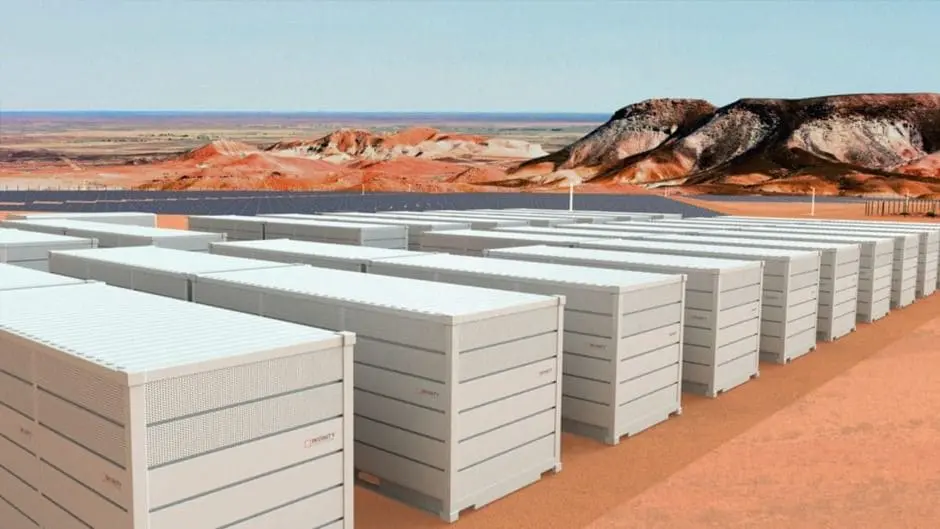
Advantages
Using VFBs has several benefits:
- Extended life cycle: Vanadium flow batteries are appropriate for long-term applications since they can endure thousands of cycles with little degradation.
- Scalability: The quantity of electrolyte in a vanadium flow battery defines its energy capacity, while its size determines its power capacity. More design scalability and adaptability are made possible by this clear division.
- Safety and stability: Because VFBs use only one element—vanadium—in several states, there is less chance of cross-contamination and the battery will remain stable over time. This makes them generally safe.
- High efficiency: These batteries have the potential to use less energy, particularly in situations where they are constantly being charged and discharged.
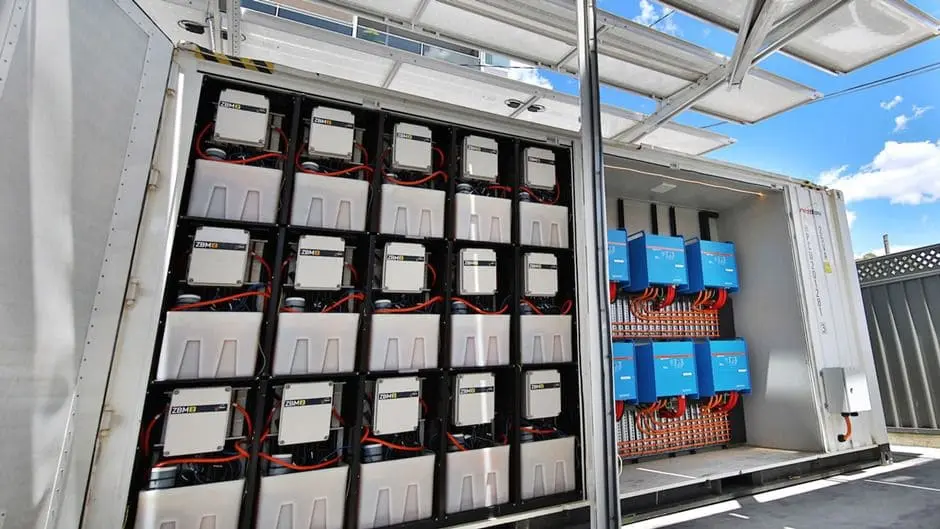
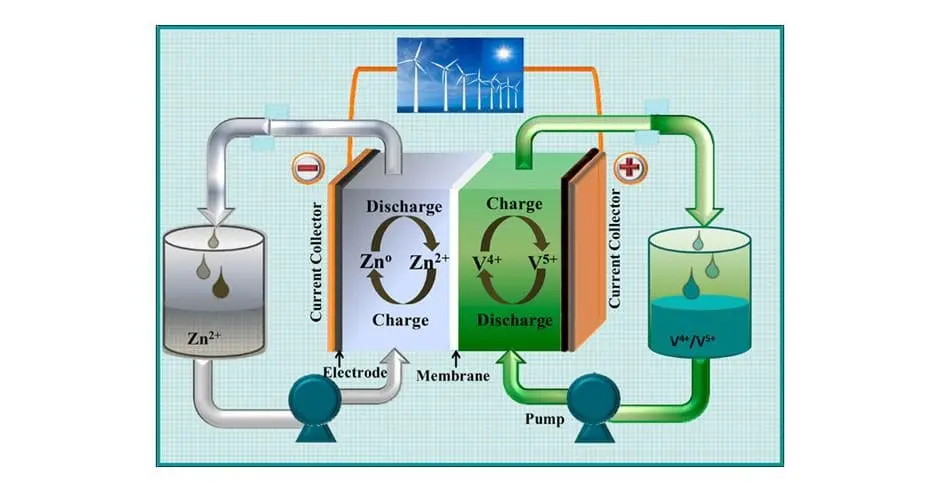
A Revolution in Vanadium Flow Battery Stack
A DICP team has created a 70-kW power-density vanadium flow battery stack and is better than 30-kW ones. Moreover, the aim of the research was to enhance the design of the stack. This increases the power density without increasing the stack’s size. Additionally, the team has made durable and specific weldable porous composite membranes, which improved the battery’s performance.
The group also used an ultra-thin battery design and a short flow channel to enhance the design. Moreover, they assisted in making an efficient stack.
Conclusion
Because of their great reversibility, relatively substantial power output, and ability to maintain their active component in solution throughout charge/discharge cycles, vanadium redox flow battery (VRFB) systems are the most advanced among flow batteries. But these systems’ capital costs are still much too high to allow for widespread market adoption. Recent studies have shown that organic active materials can be used in solid-state organic batteries, which store energy mostly in the form of radical polymers within the cell, to reach the suggested cost targets.
